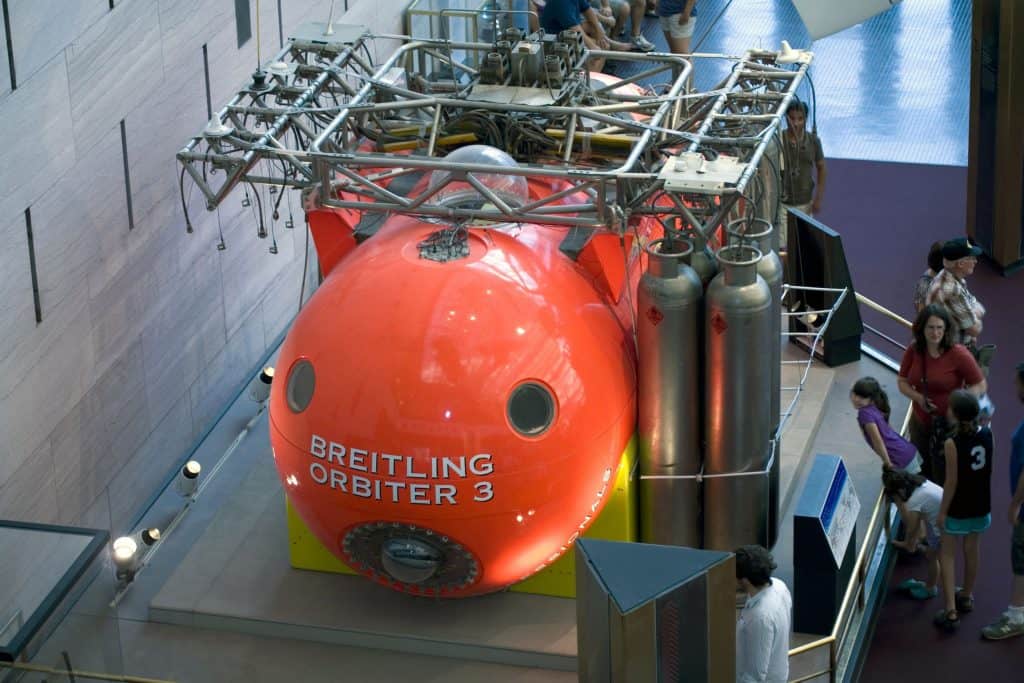
Hot air balloons have become increasingly popular in the last fifty years. This popularity has led to many asking questions about these massive, floating, sky blobs.
Hot air balloons can travel as far as the pilot is prepared to go, however, commercial hot air balloon flights normally won’t go further than a few miles. The longest hot air balloon flight ever recorded traveled 25,361 miles.
From pleasure rides in commercial hot air balloons to world record-breaking trips in highly sophisticated balloons, there’s a lot to know about how far you can travel in a hot air balloon!
What to Expect
While it’s very interesting to know you can travel almost anywhere in a hot air balloon, you probably aren’t going for any world records in your next hot air balloon ride. If you are, you need to be reading something much more technical.
Odds are you’ve either just signed up for a hot air balloon ride or you’re thinking about going on one. If that’s the case, what should you expect?
On an average hot air balloon ride, if you fly perfectly straight for an hour, you’ll travel about five miles. Differences in wind or direction could alter that distance. Expect to travel between one and ten miles.
Free Flights
Unfortunately, this section will not tell you how to find a hot air balloon ride that doesn’t cost any money. Those probably don’t exist (but let me know if they do!).
Instead, this section covers what to expect if your hot air balloon isn’t tied to the ground.
Most commercial free flying hot air balloon rides last for about an hour. In that hour of time, you could travel just about anywhere!
The hot air balloon will likely be followed by a car or two on the ground. The ground crew helps alert the balloon of any hazards, and pack up everything once you’ve landed.
If the pilot sees that you’re getting too far away from where you want to be, he’ll either look for a different wind pattern or just land. There’s no need to worry about getting lost out there!
The pilot should have some ideas for landing areas in the area. If it’s getting late, the pilot will just land in a large, open area. In any case, you shouldn’t expect to travel too far!

Tethered Flights
If you’re going to a hot air balloon festival, tethered flights aren’t too uncommon. There are also some cities that have tethered balloons in their public parks.
One example is in Irvine, California. The Orange County Great Park in Irvine is home to a tethered gas balloon that operates four days out of the week and can carry up to thirty passengers!
Tethered balloons allow for consistent flights over a given schedule. Because they’re tethered, we know they aren’t going anywhere!
At venues like balloon festivals and public parks, this is ideal. There will be lots of people who want to jump in that balloon and get in the air!
Tethered balloons make it possible to accommodate as many passengers as possible in these scenarios.
If your plans include a tethered balloon, all you need to do is look up the scheduled departure and landing times to see how long you’ll be in the air. As far as traveling, you won’t go anywhere but up!
How Hot Air Balloons Travel
It may be a surprise to you that hot air balloons can travel as long as you can keep them in the air! Because hot air balloons don’t have any forward propulsion system, you may wonder how that’s possible.
Burners and Buoyancy
The first question that needs to be answered is actually “how do hot air balloons rise in the first place?”. The short answer is that hot air balloons rise because of hot air.
That answer probably isn’t very helpful though! A more scientific answer is that hot air balloons rise because of the law of buoyancy.
The process looks something like this:
The envelope is filled with air, and then the air is heated by one or more propane burners. As the air inside the envelope warms, it becomes less dense than the air outside the envelope, causing the balloon to rise.
In other words, the hot air balloon gets filled with hot air and hot air rises. Boom, science.
As I mentioned, it’s propane burners that heat the air inside the envelope. These burners are attached to liquid propane canisters attached to the balloon’s basket.
As long as you have propane, you can keep the air inside the envelope heated and stay in the air. Once you’re out of propane, you’re sunk (literally).
But staying in the air isn’t the same thing as traveling. What makes a hot air balloon move? That part is up to Mother Nature.
Relying on the Wind
Hot air balloons aren’t like airplanes or helicopters. The extent of a hot air balloon’s flying abilities is going up or down.
When it comes to moving laterally, a hot air balloon doesn’t have any technology to propel itself in any direction. The only way a hot air balloon moves laterally is through the wind.
Once a hot air balloon travels up into the sky, it’s entirely up to the wind to carry it anywhere. That’s one of the reasons why most hot air balloons don’t go up on a windy day.
So even if you have a million propane tanks, and can somehow create enough buoyancy to lift all of them, you still can’t guarantee you’ll go anywhere.
Thankfully, we have a lot of understanding about air patterns. By harnessing this understanding, we can have some control over where hot air balloons go.
I stress the point that we me have some control. Not much, but some.
Shorter trips require little more than a knowledge of the daily forecast. Longer trips look into atmospheric circulation.
Taken together, sustained buoyancy and favorable wind patterns could carry a hot air balloon ride as far as science is willing.

Early Balloons
Early balloons couldn’t travel nearly as far as hot air balloons do today. They were subject to the same laws, but they lacked a lot of our modern advantages.
Limitations
There were several limitations for early hot air balloons. One of them was the inventors of the hot air balloon thought it was smoke, not hot air, that helped their balloons fly.
Today, we have a much better understanding of molecular science, and we know that it’s the oxygen molecules being heated that causes increased buoyancy.
Because early balloonists thought it was smoke that lifted their balloons, they often used wet fuel in their fires to create as much smoke as possible.
This leads us to the next issue: liquid propane hadn’t been discovered and propane burners hadn’t been invented. This meant that early hot air balloons carried wood and other fuel to burn on-board.
This weighed more, burned slower, and was less predictable. If the air inside a modern envelope is warm enough, you just turn off the propane. It wasn’t as easy back then.
And then there was the issue of the envelope. The inventors of the hot air balloon, the Montgolfier brothers, were paper manufacturers. They collaborated with a wallpaper manufacturer to make their envelope.
You can imagine what they used: various forms of paper. Spoiler alert: paper is really flammable. This caused a lot of issues in early hot air ballooning.
Even after the Montgolfier brothers transitioned to using sackcloth, the flammability issue remained.
Hot air balloons just couldn’t stay in the air as long, and therefore couldn’t travel as far.
Early Achievements
There were some early successes in hot air balloon travel though! The invention of the hot air balloon was a success in and of itself.
The first manned flight traveled for about twenty-five minutes and traveled five and a half miles! The balloon could have traveled farther, but the pilots put it down when it started to catch fire.
This flight was longer than earlier unmanned tests that traveled between one and two miles. Some records do indicate that one unmanned test may have traveled up to six miles, but there were no witnesses.
The earliest balloon records pertaining to distance actually belong to gas balloons. Because of the limitations of the time, hot air balloons were quickly replaced by gas balloons.
On January 7, 1785, Jean-Pierre Blanchard and John Jeffries crossed the English Channel in a gas balloon. This was a major achievement in ballooning history!
Their trip was almost a disaster though! They brought many unnecessary supplies, including an anchor and extravagant oars for rowing through the air.
Science has come a long way since then, and so have hot air balloons!

Modern Day Records
With the help of Ed Yost, hot air balloons erupted onto the modern stage starting in the 1950s. These modern hot air balloons were equipped with ripstop nylon, liquid propane burners, and no anchors!
What hot air balloons and balloonists have achieved in the last half-century is amazing! From Per Lindstrand to Bertrand Piccard, modern-day aviators and adventurers have pushed the limits of hot air ballooning!
This chart chronicles some of the achievements made in modern distance hot air ballooning:
| Pilot(s) | Achievement | Distance |
| Per Lindstrand and Richard Branson | First Trans-Pacific Flight | 4,767 miles |
| Bertrand Piccard and Brian Jones | First Flight Around the World | 25,361 miles |
| Steve Fossett | First Solo Flight Around the World | 20,482 miles |
| Fedor Konyukhov | Fastest Trip Around the World | 21,000 miles |
Each one of these achievements has its own interesting story. Below are just a handful of interesting facts about each!
First Trans-Pacific Flight
Per Lindstrand is a noted adventurer and hot air balloonist. He holds multiple world records. Richard Branson is a billionaire who wanted to come along for the ride!
This hot air balloon adventure also holds the record for the highest speed ever achieved by any balloon. Their balloon, the Virgin Otsuka Pacific Flyer, recorded speeds up to 245 miles per hour!
First Flight Around the World
The first flight around the world is also the longest hot air balloon flight of all time. Because there’s so much to say about this record, we’ll leave it for a later, longer section.
First Solo Flight Around the World
The first solo flight around the world was completed by Steve Fossett. Mr. Fossett is a world-renowned adventure enthusiast.
Fossett’s balloon named The Spirit of Freedom utilized both hot air and helium. This kind of balloon is often called a Roziere balloon. We include it here because it relied primarily on hot air.
Fossett’s gondola was no larger than a closet, and he only slept 4 hours a day in 45-minute intervals.
Fastest Trip Around the World
The fastest hot air balloon trip around the world did not take the shortest route possible! Fedor Konyukhov, a Russian adventurer, was blown off course of his original route by over 600 miles.
Nevertheless, Konyukhov finished in just over eleven days!
The Longest Flight Ever

The first hot air balloon that flew all the way around the world also holds the record for farthest distance traveled by a hot air balloon. This amazing flight lasted for twenty days and traveled over 25,000 miles.
The pilots were Bertrand Piccard and Brian Jones. Their objective was to pilot the first ever trip around the world in a hot air balloon without any stops.
Challenges
The challenge of circumnavigating the world in a hot air balloon is massive. The number of potential hazards is astronomical!
Because hot air balloons rely on the wind to travel, traveling the world in a balloon essentially involves jumping from one air stream to the next. These air streams are notoriously hard to predict.
Aside from navigating potentially dangerous air streams, Piccard and Jones had to watch out for storms, mountains, airplanes and helicopters, and stagnant wind.
Aside from all of these concerns, there are issues of conserving fuel, the extreme temperatures, personal health, and hostile airspace.
That’s right, hostile airspace. It’s actually is a major issue.
Many countries don’t allow hot air balloons to fly over them. In fact, Belarus shot down a hot air balloon traveling internationally in 1995. Both pilots were killed.
Piccard and Jones certainly got permission to fly over several countries that had been previously hostile, but their trip was not without international tension.
China opened its airspace to Piccard and Jones but did not allow them to cross the 26th parallel. Piccard and Jones did their best to jump from jet stream to jet stream, but came close to disaster!
More than once, Piccard and Jones and their balloon, the Breitling Orbiter 3, came within a few miles of the 26th parallel. Each time they came close, the Chinese government sent warnings to them and their team in Geneva, Switzerland.
Through all of the challenges, the Breitling Orbiter 3 would indeed end up successful!
Success!
On March 21st, the Breitling Orbiter 3 completed it’s trip around the world, crossing the invisible finish line traveling 130 miles per hour!
One of the keys to success was the ground crew in Geneva, Switzerland. This crew helped navigate challenging jet streams and international complexities.
The head meteorologist on the crew, Luc Trullemans, was so successful he was later hired by Steve Fossett for his solo trip around the world!
The world greeted the news of Piccard and Jones’ successful journey. Switzerland issued a commemorative stamp, and Piccard and Jones were awarded a million dollar prize by Anheuser-Busch, a beer company.
A couple in the United States even named their baby, born the night before the Breitling Orbiter 3 crossed the finish line, Breitling in honor of the record-breaking balloon!
Piccard and Jones opened a charity organization with their prize money called the Winds of Hope Foundation.
The record set Piccard and Jones lives on as one of the greatest accomplishments in hot air balloon history. Like hot air balloons, there is apparently no limit to how far humanity can travel.
